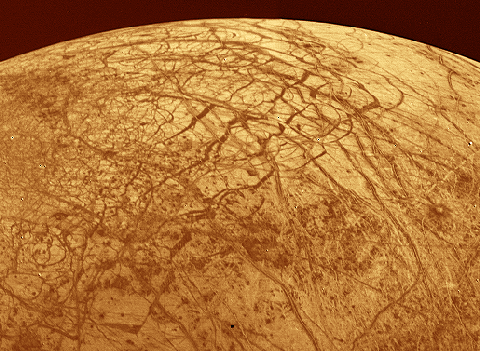
Apparently, people are thinking that Europa, the icy moon of Jupiter, could possibly support macroorganisms like fishes! The story is that there is likely liquid water underneath the ice-shell, and because life on earth can live to about -50 C, why couldn't there be life there? The water may also be warmed because it is thought that the gravitational force of Jupiter could cause enough flux to keep the core of Europa molten. The ice patterns on the surface indicate great tidal forces, and besides the cracking, the surface being so smooth and crater-less, scientists also figure that the ice is constantly turning over and able to introduce oxygen into the liquid water underneath. And if the core of Europa is molten, you could imagine there being structures like the midatlantic oceanic ridge, with black smokers and whatnot spewing out all sorts of chemicals from the mantle. And we all know that life eats that shit up (literally! har har).
I would also like to point out, though, that oxygen is toxic to most forms of life, and maybe you could get a macroorganism that would subsist on "breathing" something else. Oxygen just serves as an electron acceptor and microorganisms on our planet can "breathe" other things like Fe(III), and SO4 or CO2, which I guess also involve oxygen, but whatever...
Apparently the folks at NASA were so excited at the idea of liquid water on Europa that they purposefully crashed their Galileo probe into Jupiter, rather than potentially contaminate Europa. Unfortunately, though, the next probe that heads in that direction might be a ways off because of the technological challenges, like needing its own power source.






